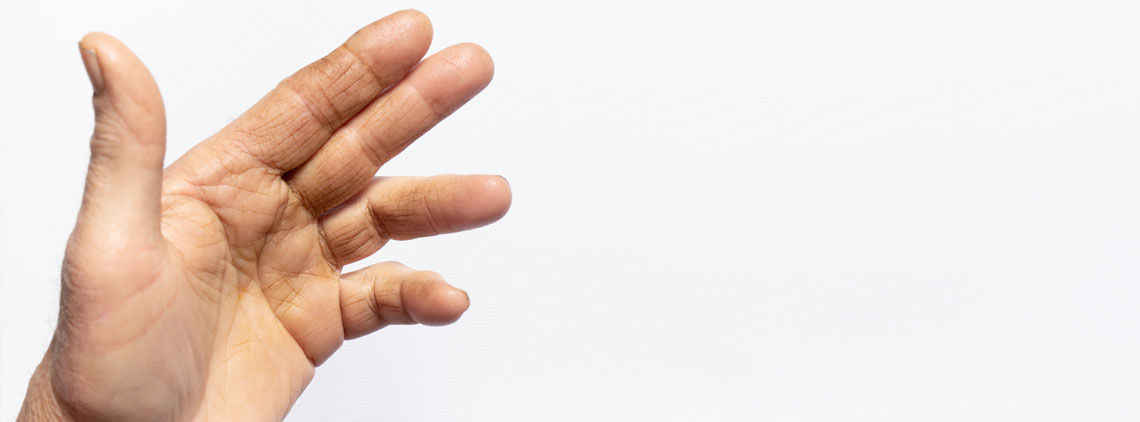
Dupuytren’s Disease
Overview
Dupuytren’s Disease affects the fibrous tissue under the skin in the palm and fingers known as the fascia. The fascia anchors and stabilizes the skin located on the palm of the hand. This condition causes the fascia to thicken over time pulling the fingers towards the palm of our hand known as “Dupuytren’s Contracture.” This pulling can make it very difficult to do your normal activities.
You may have initially noticed lumps or nodules under the skin on your palm followed by “pitting” as your diseased tissue pulls on the skin covering it. As it progresses it creates thick cords pulling one or more fingers or the thumb into a bent position. While it may look like a tendon is causing the pulling of your fingers, these aren’t actually your tendons.
This condition is more likely to affect men over women and those who are more predominantly European or Scandinavian descent. While this condition typically runs in families, your chance of getting it increases if you drink alcohol, have diabetes, or seizures. The older you are the more increased your chances are of being diagnosed with Dupuytren’s.
Nonsurgical Treatment Options for Dupuytren’s Disease
Dupuytren’s contracture progresses so slowly that the mild cases may not need treatment for years. However, the more moderate and severe cases may need treatment in order to straighten the curled fingers. The cause and cure of this disease are unknown however there are several treatment options.
- Splinting. The use of a splint holds the finger in place. However, it’s unknown if this prevents the progression of the finger.
- Steroid Injection.A stronger anti-inflammatory medicine may be used to be injected directly into the painful nodule. This may slow the progression however it varies from patient to patient.
- Enzyme Injection. The FDA (Federal Drug Administration) approves of this new technique. The enzyme known as collagenase injected into the affected cord in your hand and within 24-72 hours the affected fascia will dissolve or weaken. Then the next step performed under local anesthesia allows us to straighten your fingers in an effort to break apart the restrictive cords. This is often successful in providing you more range of motion, less pain, and reduced swelling. Since this is a new treatment the long-term results are unknown.

